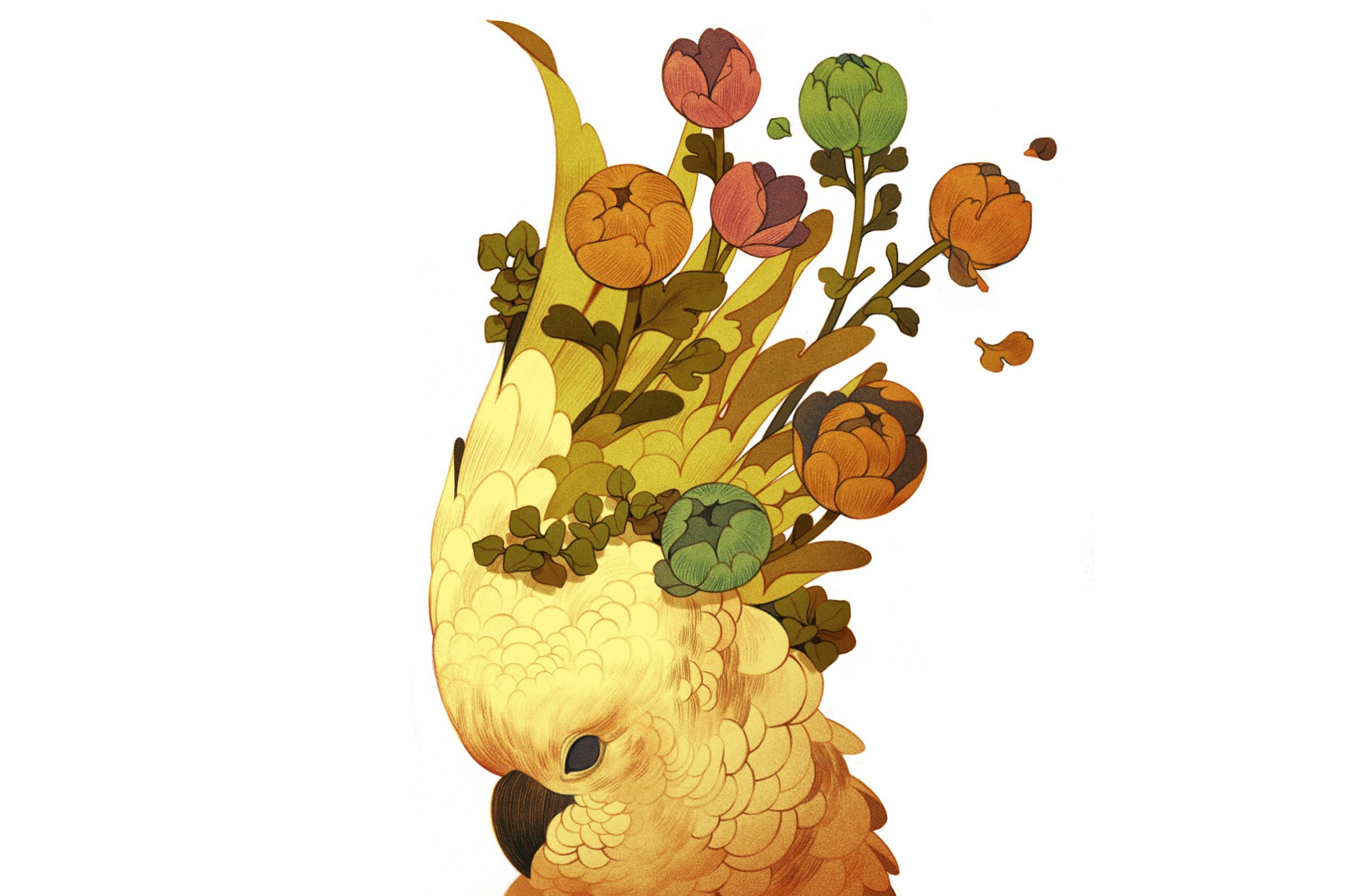
It has been a very bad year for Bud the parrot, but it has been even worse for his former owners Glenna and Martin Duram. Martin is dead, Glenna is in prison for his murder, and it was Bud, a witness to the crime, who tried to rat her out. Really.
In 2015, Glenna shot Martin five times in the midst of an argument in their Michigan home. A sensational crime became all the more so when Bud began repeating the words, “Shut up!” and much more tellingly, “Don’t f-cking shoot!” The “Shut up!” was in no one’s voice in particular, but the plea not to pull the trigger was unmistakably in Martin’s.
There was no limit of good reasons why Bud wasn’t put on the stand–beginning with the “raise your right hand” part. Even if it had somehow been possible to bring the bird into a courtroom and have him repeat Martin’s last words, there was no way of establishing that he didn’t simply pick them up from a television show. Still, Glenna was convicted on other evidence, Bud went off to live with a relative of the family’s, and the scientific community had one more extraordinary story about the equally extraordinary intelligence of birds.
Never mind the familiar birdbrain insult; in recent years, investigators have learned more and more about the improbable cognitive abilities of at least some types of birds. That, in turn, is providing new insights into how brains–including our own–work across the entire animal kingdom.
Of the dozens of families of birds, there are three that have attracted the most research into intelligence: corvids, which include crows, ravens, jays, magpies and other species; Psittacidae, which include parrots, parakeets, lovebirds and kea; and Cacatuidae, which include cockatoos and cockatiels. Crows, for example, have long been known to be adept toolmakers–by, say, reshaping a paper clip into a hook so they can fish a treat out of a narrow vessel. Rooks, another corvid species, have figured out that if they drop pebbles into a partly filled pitcher, they can raise the water level enough to snag treats floating on the surface. Some rooks even realize that by dropping the bigger pebbles in first, they can speed the job along considerably.
In July, a pair of investigators at Lund University in Sweden went further, showing that ravens have not only the cognitive ability to master tool use but also the temperamental ability to use that skill to its best advantage. Ravens that were taught to open a box with a tool in order to get a treat inside would later select the tool from a tray of other distracting objects and set it aside even if the box wasn’t presented along with it.
In a related experiment, the ravens also showed a talent for delayed gratification. After being trained to use a token that they could exchange with a researcher for a food reward, the birds would later select the same token from a tray of objects that also included an immediate but less appealing treat. Out of 144 trials, the birds chose the token 143 times, correctly wagering that if they were patient, a human would appear and let them cash it in for a more desirable reward.
“Birds will wait for better,” says comparative psychologist Irene Pepperberg of Harvard University, perhaps the best-known figure in the field of avian cognition. “But if you give our gray parrot Griffin the better treat first, he’ll look at you for about a second as if to say, ‘What, are you kidding? I’m not waiting for a worse treat.’ Then he’ll grab it.”
It is language that is the most dramatic avian skill. The parrot’s ability to mimic and even understand human speech is impressive enough. Pepperberg became famous for the work she did with Alex the gray parrot, who died in 2007 at age 3 with a vocabulary of more than 100 words and the ability to assemble them into simple sentences. (His last words, when Pepperberg covered his cage on the night he died, were, “You be good, see you tomorrow. I love you.”)
Karl Berg, a professor of avian ecology at the University of Texas Rio Grande Valley, is conducting studies in South America recording parrot calls. He is uncovering a complex vocabulary that allows the birds to convey information about food, predators, mating and other relevant matters.
No bird is going to displace humans as the smartest critters on the planet, of course, but all of this work is nonetheless a reminder that our familiar, self-flattering equation–big thoughts require big brains–is a myth. There are elegant brains and nimble brains too–and they are home to equally elegant and nimble minds.
More Must-Reads from TIME
- Why Trump’s Message Worked on Latino Men
- What Trump’s Win Could Mean for Housing
- The 100 Must-Read Books of 2024
- Sleep Doctors Share the 1 Tip That’s Changed Their Lives
- Column: Let’s Bring Back Romance
- What It’s Like to Have Long COVID As a Kid
- FX’s Say Nothing Is the Must-Watch Political Thriller of 2024
- Merle Bombardieri Is Helping People Make the Baby Decision
Write to Jeffrey Kluger at jeffrey.kluger@time.com